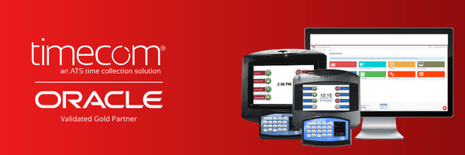The Association of Certified Fraud Examiners (ACFE) reports that payroll fraud accounts for nine percent of all asset misappropriation. The ACFE estimates the median cost for each committed payroll fraud is $62,000.

Payroll fraud covers many examples of unsavory behavior. Common types of payroll fraud range from the simple methods of time theft to the more ambitious process of creating fictitious employees. The direct and indirect costs of payroll fraud are a drag on every company's competitiveness and bottom line.
These best practices help create a culture and operational framework that discourages and undermines any sort of fraud scheme.
#1 Treat Workers Well
Workers who feel disengaged from their employers impose high costs on the business. Their inhibitions against engaging in types of payroll fraud are low. Companies that show respect for workers' contributions and their non-work lives create a partnership with their workforce.
Careless scheduling practices are a sure way to disengage workers. For example, employees get frustrated when they are constantly given short notice of upcoming hours. By elevating your company’s scheduling practices with an automated timekeeping system, you will be able to learn from past worker attendance trends. Such analysis helps you use predictive scheduling to increase schedule notice and flexibility for workers.
Engaged workers look out for the business. The largest means by which companies initially detected fraud is through tips. According to the ACFE, 43% of fraud was discovered this way. Half of the people reporting these tips are employees. Workers who are engaged in the success of the business will take this kind of step to protect it.
#2 Audit Data
While human tips were the biggest source of fraud detection, the second most common means was through internal audit. Per the ACFE report, “Anti-fraud controls such as account reconciliation, internal audit departments, involved management review, and active cultivation of tips are all tools that can lead to more effective detection of occupational fraud.”
By having a system that sends notifications to your internal teams of fraud attempts, payroll records can identify workers who are outliers in hours worked. Time and attendance system reports also provide managers with valuable information, such as:
- Who is an outlier in overtime hours, which could suggest timesheet fraud.
- When two employees consistently clock in and out within seconds of each other at the same time clock. This could be a type of fraud called “buddy punching”.
- Who consistently punches in early and out late, another type of timesheet fraud.
#3 Create an Attendance Policy
Design attendance policies that make time theft difficult. A common payroll fraud tactic is clocking in early for shift or from break. Using a time clock system that has functionality to prevent clocking in early eliminates this avenue of payroll fraud.
%20-%20Data%20Collection%20that%20makes%20sense%20-%20Follwup%20graphic%20email.png?width=276&height=276&name=EATC2273%20-%20Intro%20to%20Timecom%20(3)%20-%20Data%20Collection%20that%20makes%20sense%20-%20Follwup%20graphic%20email.png)
By utilizing the TimeCom solution if a worker attempts to clock in 10 minutes early from a lunch break, the time clock can prevent it. The clock will display a message stating their lunch break is not over, instead of accepting the time punch. If the time clock has attestation functionality, it could accept the punch.
#4 Avoid Rounding
Do not round up or down employee attendance time. First, bad rounding practices in the payroll process opens up a company into the potential wage and hour compliance problems. Second, rounding employee time sets up the conditions for a shrewd employee to game the system.
Many systems use a 15-minute rounding window, which is a lot of time a worker can intentionally steal. If they time their clocking in and out well, they could add an extra half hour every day. Systems that allow this grants an easy pathway for employees to falsify their timesheet. Set your time clocks to capture the exact time of every punch and use that actual time in your payroll records.
#5 Install Biometric Time Clocks
Biometric time clocks eliminate the ability of workers to buddy punch or the ability to set up ghost employees in the system. When the time clock verifies the employee using their finger – by using a fingerprint time clock these types of fraud are not possible

#6 Communication
The final best practice is one common to all company initiatives: communication. Tell workers what the company's payroll fraud policies are and that various systems are in place to detect it.
You do not need to share all the details of your company's monitoring and audit programs. Some elements will be visible. For example, using time clock attestations to prevent time padding. These open practices let workers know the organization is proactively working to obstruct employee payroll fraud.
Most employees engaging in payroll fraud probably aren’t acting maliciously, only taking advantage of an opportunity. When they see an anti-fraud program, that can motivate them not to take the risk.
Contact our team to get a personalized demo of our time clocks for oracle.




%20-%20Data%20Collection%20that%20makes%20sense%20-%20Follwup%20graphic%20email.png?width=276&height=276&name=EATC2273%20-%20Intro%20to%20Timecom%20(3)%20-%20Data%20Collection%20that%20makes%20sense%20-%20Follwup%20graphic%20email.png)
